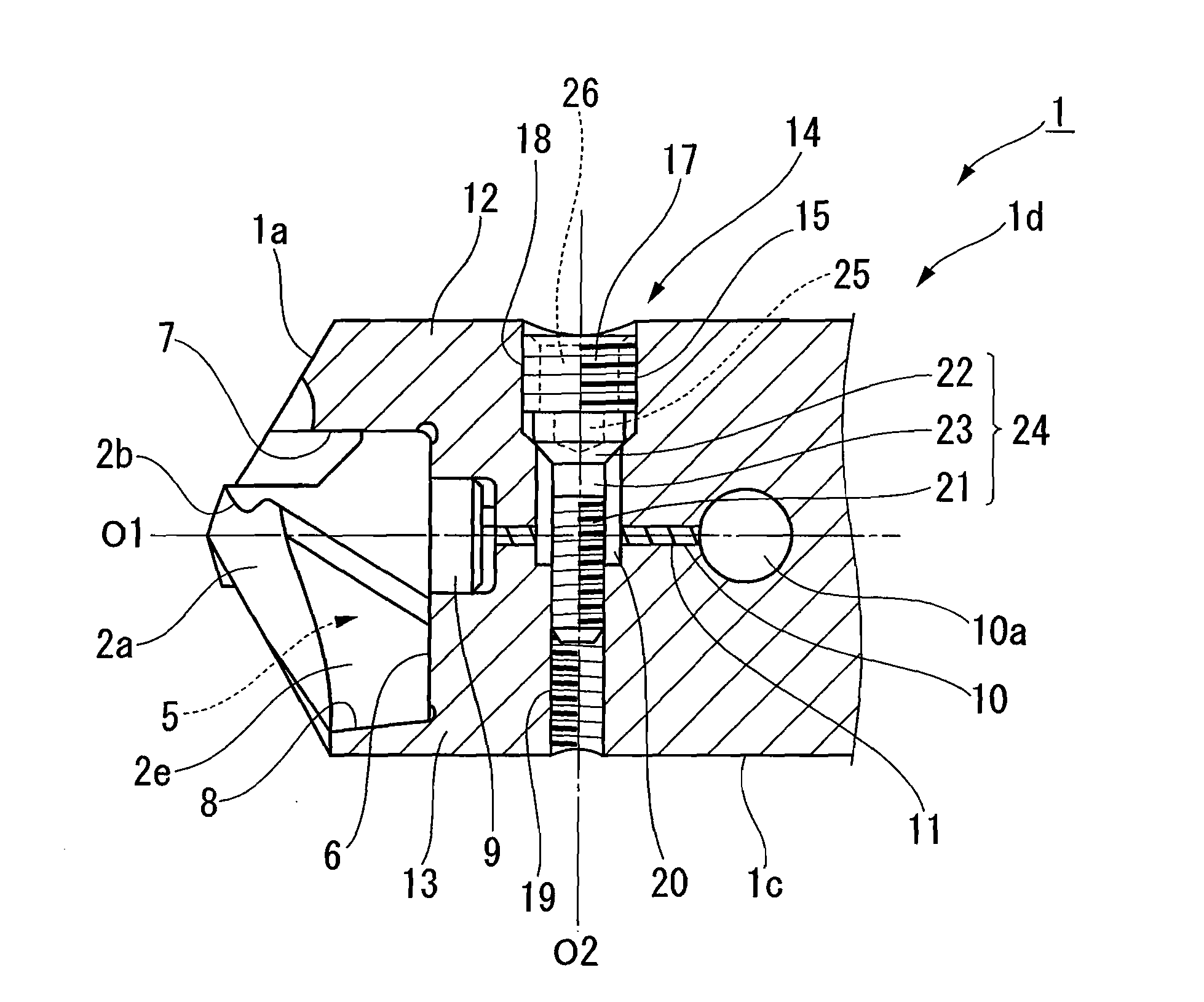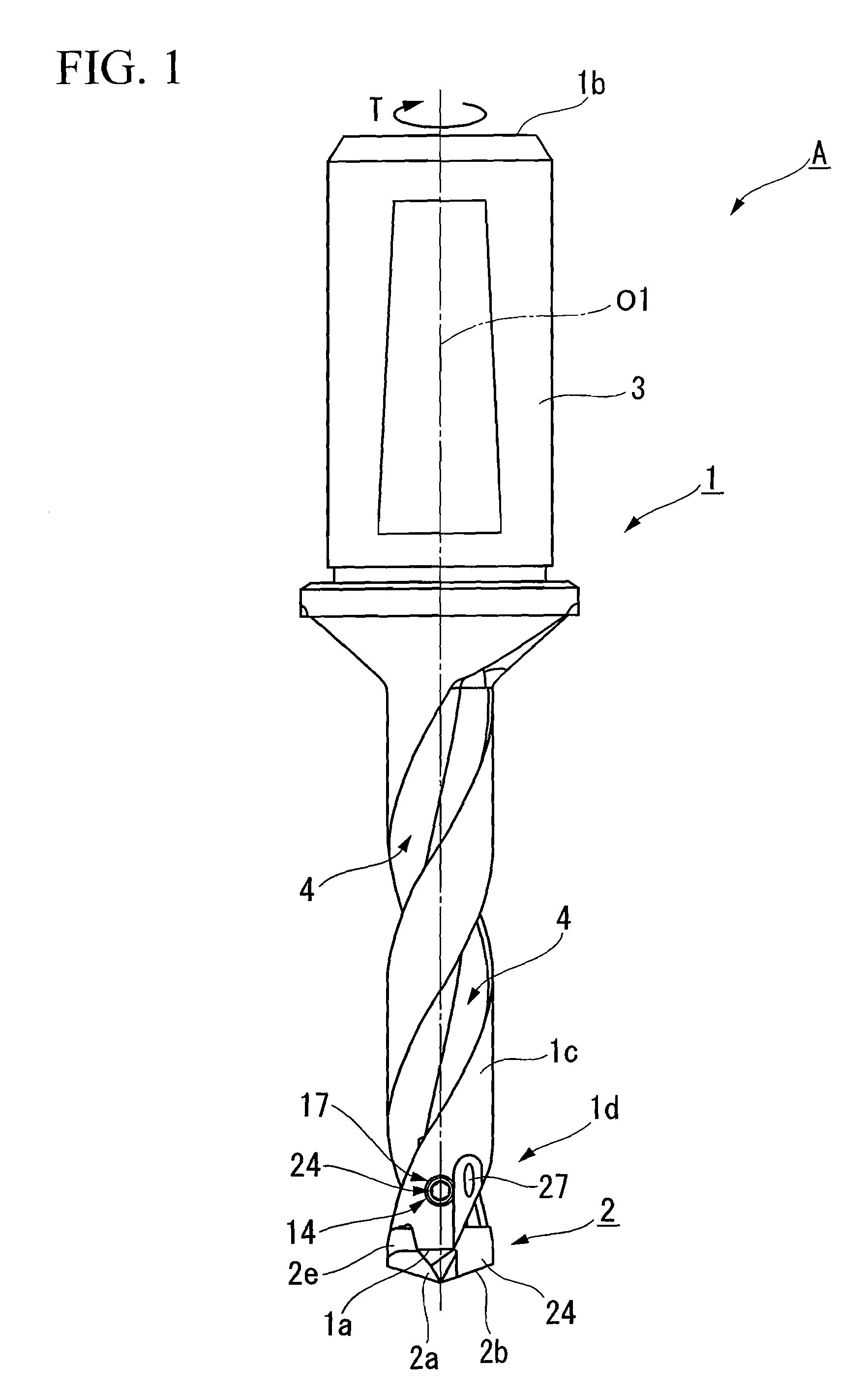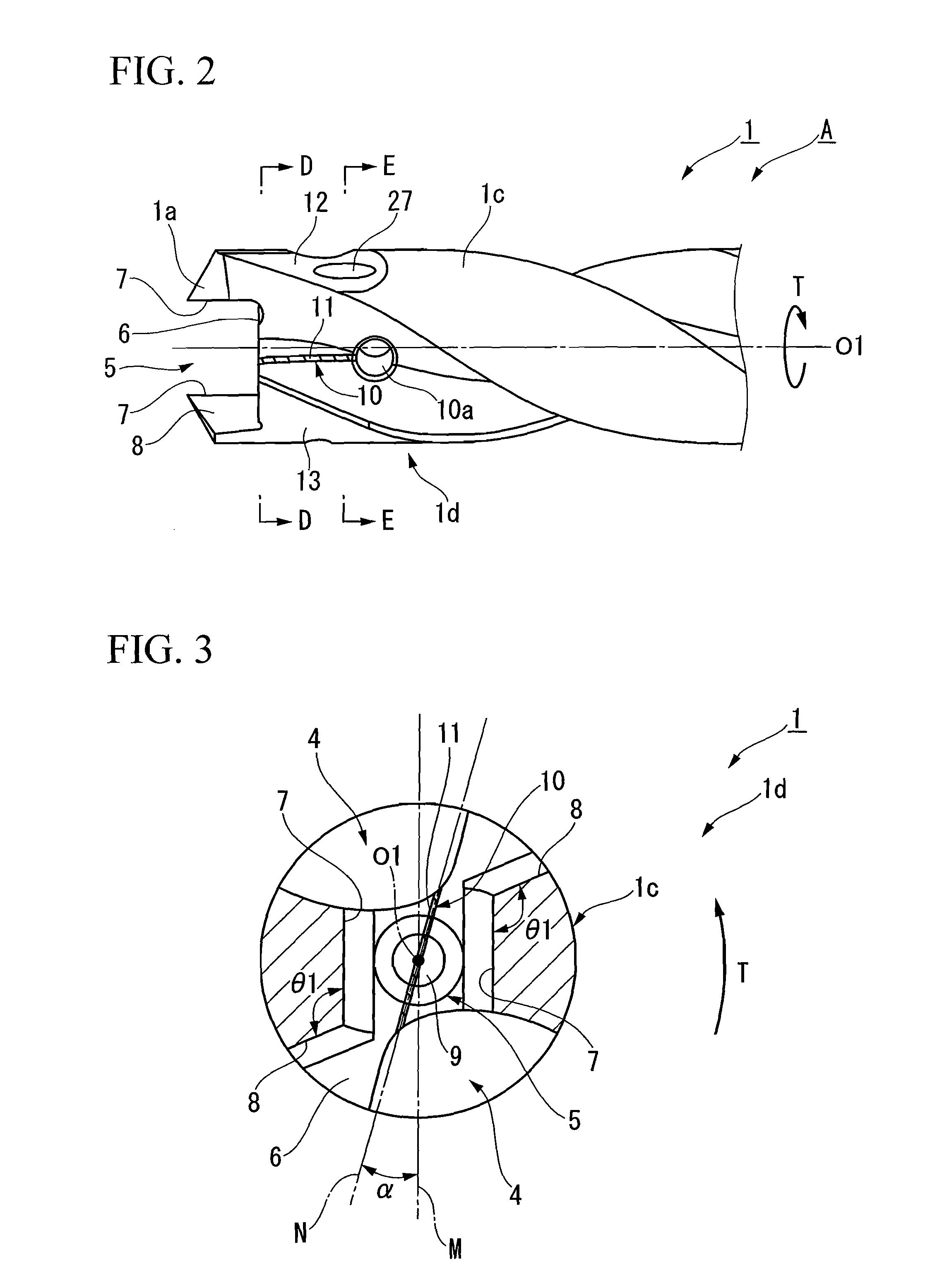Indexable drill
a drill bit and indexing technology, applied in the direction of twist drills, cutting inserts, manufacturing tools, etc., can solve the problems of reducing the transmission clamping force, affecting the adherence between the two faces, and posing repetitive machining, etc., to achieve high degree of attachment rigidity and attachment accuracy, reliable transmission torque, and large clamping force
- Summary
- Abstract
- Description
- Claims
- Application Information
AI Technical Summary
Benefits of technology
Problems solved by technology
Method used
Image
Examples
Embodiment Construction
[0036]Below, the indexable drill pertaining to a first embodiment of the present invention is described with reference to FIG. 1 to FIG. 9.
[0037]As shown in FIG. 1, an indexable drill A pertaining to an embodiment of the present invention is composed of a drill body 1 which rotates around axis O1 (drill rotation direction T) and which is formed in an approximately cylindrical rod shape, and a cutting insert 2 which has cutting edges 2b on a tip face 2a, and which is removably mounted onto the tip 1a side of the drill body 1.
[0038]The drill body 1 is provided with a shank 3 at its proximal end 1b side which is, for example, held by a chuck or the like of a machine tool, and its tip 1a side is formed into an approximately multistage cylinder shape with a contracted diameter relative to this shank 3. At the periphery of the tip 1a side of the drill body 1, a pair of chip discharge flutes 4 which open at tip face 1a are helically formed on mutually opposite sides with axis O1 in between...
PUM
| Property | Measurement | Unit |
|---|---|---|
| crosshatch angles | aaaaa | aaaaa |
| crosshatch angles | aaaaa | aaaaa |
| angle | aaaaa | aaaaa |
Abstract
Description
Claims
Application Information
 Login to View More
Login to View More - R&D
- Intellectual Property
- Life Sciences
- Materials
- Tech Scout
- Unparalleled Data Quality
- Higher Quality Content
- 60% Fewer Hallucinations
Browse by: Latest US Patents, China's latest patents, Technical Efficacy Thesaurus, Application Domain, Technology Topic, Popular Technical Reports.
© 2025 PatSnap. All rights reserved.Legal|Privacy policy|Modern Slavery Act Transparency Statement|Sitemap|About US| Contact US: help@patsnap.com



